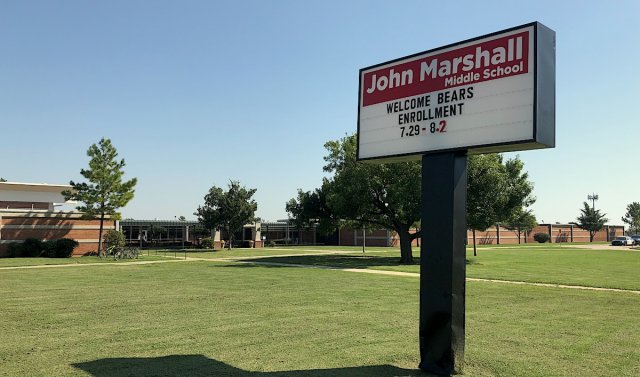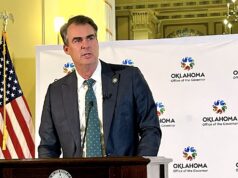
As the Oklahoma City Public School District deals with the high-profile student fights at John Marshall Middle School, the district should welcome an opportunity to be more candid with the public. Meanwhile, the district’s families should thank social media for bringing public attention to the situation.
While teaching at the old John Marshall High School and Centennial High School during the 1990s and early 2000s, I saw dozens of brawls spin out of control and become “riots.” Before social media, however, the district could easily hide the situations from the public. Because the district was so focused on keeping bad news out of the press, the violence often continued for weeks or even months at a time.
Worse, OKCPS would explicitly or implicitly blame teachers. Although few administrators really believed the normative mantra, they would pretend that better instruction and better leadership would be enough to improve high-challenge schools. It was not a helpful position to take.
On Aug. 28, Rep. Jacob Rosecrants (D-Norman) basically acknowledged the illogical nature of such thinking on Facebook:
Teachers & administrators within a school do all they can to prevent fights, but they still happen. What sets this particular fight apart is that it is gaining massive media coverage and a teacher was pretty seriously injured, and it happened at a school where the student population has experienced great change.
District starting to see the ‘big picture’
At last week’s working board meeting, OKCPS Deputy Superintendent Jason Brown acknowledged a different mistake from the district’s past when it came to busing: that the district did not see the “big picture.” That candor can now be applied to the John Marshall Middle School situation.
On one hand, the district failed to acknowledge what it would have taken to merge fifth graders with the John Marshall and Centennial middle schools. And the district’s original statements were unfortunate, understating the seriousness of the violence. They illustrated the longstanding mindset which has made it so hard to improve high-challenge schools, especially middle schools.
On the other hand, it now looks like OKCPS is willing to take a big-picture view of the challenge in a way it would have never contemplated in the past. OKCPS used to deny the facts about schools serving kids from generational poverty who have survived multiple traumas. Consequently, teachers and principals were almost never allowed to take the common sense actions required for safe and orderly schools.
The old saying is that a crisis is a terrible thing to waste, and it looks like OKCPS Superintendent Sean McDaniel is taking wise actions in the face of this one. He reassigned the school’s principal and assistant principal, replacing them with former Douglass assistant principal Michael Harris and veteran administrator Chris Gardner. More importantly, McDaniel told a hard truth.
“The first two and a half weeks have undoubtedly been difficult for kids and families, as well as for faculty and staff. We, as a district, have fallen well short of providing them with the educational environment they need and deserve,” McDaniel said in a press release last week. “As superintendent, it is my responsibility to put all of our schools in a position to succeed, and I have not done that adequately. For this, you have my deepest apologies.”
According to the release, the district’s “school climate” team will “assist in evaluating and developing strategies on effective implementation of classroom, hallway and cafeteria expectations.” Most importantly, the district has “welcomed a number of our community partners [who] have pledged their support with offers to wrap their arms around John Marshall Middle School.”
Acknowledging what change really requires
Moving forward, I hope OKCPS will heed the lessons of our history and current education research, as the community understands the district’s past responses were pretty typical of urban schools. Above all, I hope the new leaders at John Marshall Middle School and the “school climate” team will have open minds and will heed the judgments of veteran educators and patrons while rejecting the normative quick fixes of the last generation.
I also hope the district will listen to its students. Violence and disruption are rooted in the stress and anxiety that they bring to school. Often, misbehavior is a cry for help. When educators are asked to or allowed to ignore misdeeds, they are ignoring their kids’ pleas for a safe, orderly and loving environments.
In a social media age where school disruptions can quickly go viral online, now is the time to be candid and acknowledge what it really takes to turn around schools like John Marshall Middle School.





















